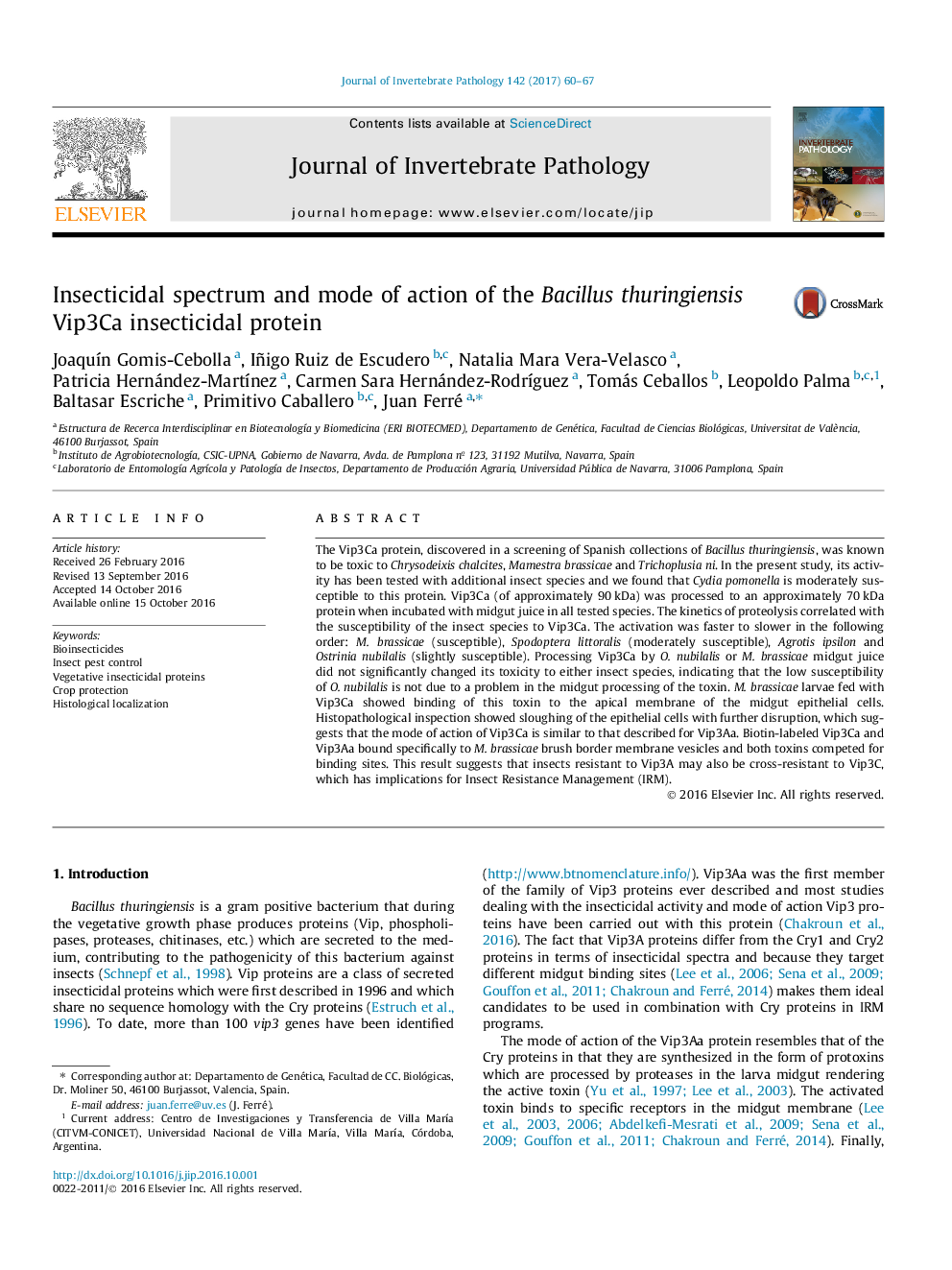| کد مقاله | کد نشریه | سال انتشار | مقاله انگلیسی | نسخه تمام متن |
|---|---|---|---|---|
| 5767052 | 1628210 | 2017 | 8 صفحه PDF | دانلود رایگان |

- The kinetics of the activation is positively correlated with the susceptibility of the species.
- Vip3Ca causes damage to the midgut of Mamestra brassicae.
- Vip3Ca binds to the brush border membrane of the M. midgut epithelium.
- Vip3Ca shares binding sites with Vip3Aa in M. brassice.
The Vip3Ca protein, discovered in a screening of Spanish collections of Bacillus thuringiensis, was known to be toxic to Chrysodeixis chalcites, Mamestra brassicae and Trichoplusia ni. In the present study, its activity has been tested with additional insect species and we found that Cydia pomonella is moderately susceptible to this protein. Vip3Ca (of approximately 90Â kDa) was processed to an approximately 70Â kDa protein when incubated with midgut juice in all tested species. The kinetics of proteolysis correlated with the susceptibility of the insect species to Vip3Ca. The activation was faster to slower in the following order: M. brassicae (susceptible), Spodoptera littoralis (moderately susceptible), Agrotis ipsilon and Ostrinia nubilalis (slightly susceptible). Processing Vip3Ca by O. nubilalis or M. brassicae midgut juice did not significantly changed its toxicity to either insect species, indicating that the low susceptibility of O. nubilalis is not due to a problem in the midgut processing of the toxin. M. brassicae larvae fed with Vip3Ca showed binding of this toxin to the apical membrane of the midgut epithelial cells. Histopathological inspection showed sloughing of the epithelial cells with further disruption, which suggests that the mode of action of Vip3Ca is similar to that described for Vip3Aa. Biotin-labeled Vip3Ca and Vip3Aa bound specifically to M. brassicae brush border membrane vesicles and both toxins competed for binding sites. This result suggests that insects resistant to Vip3A may also be cross-resistant to Vip3C, which has implications for Insect Resistance Management (IRM).
143
Journal: Journal of Invertebrate Pathology - Volume 142, January 2017, Pages 60-67